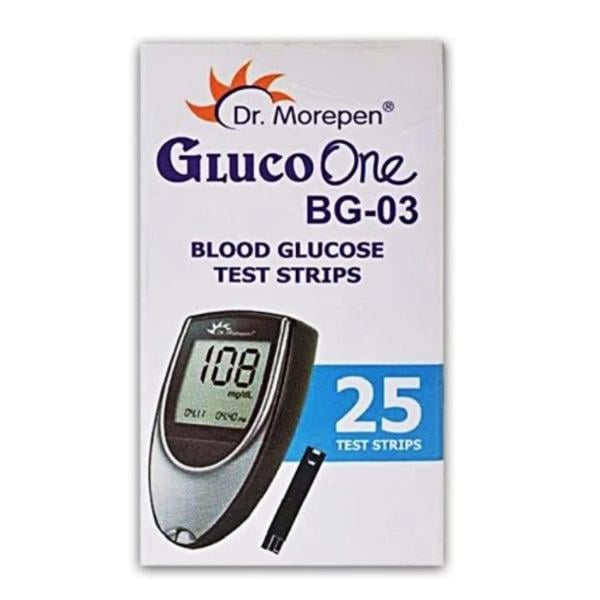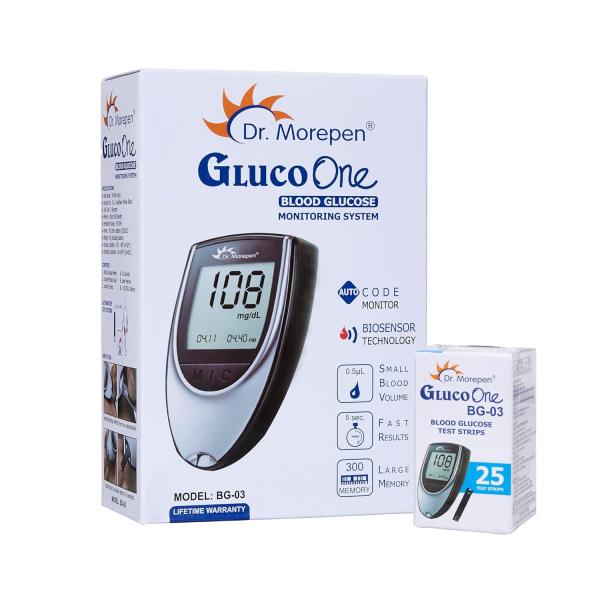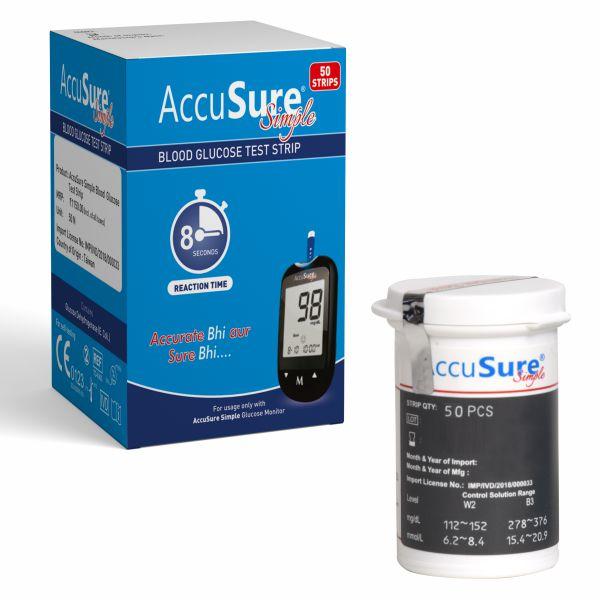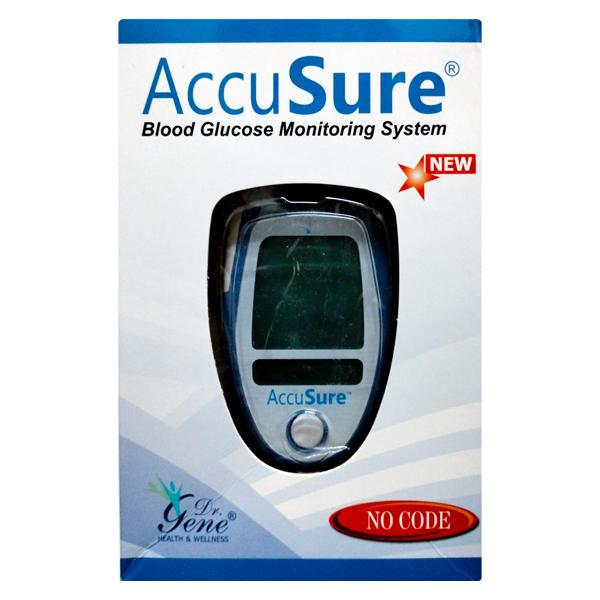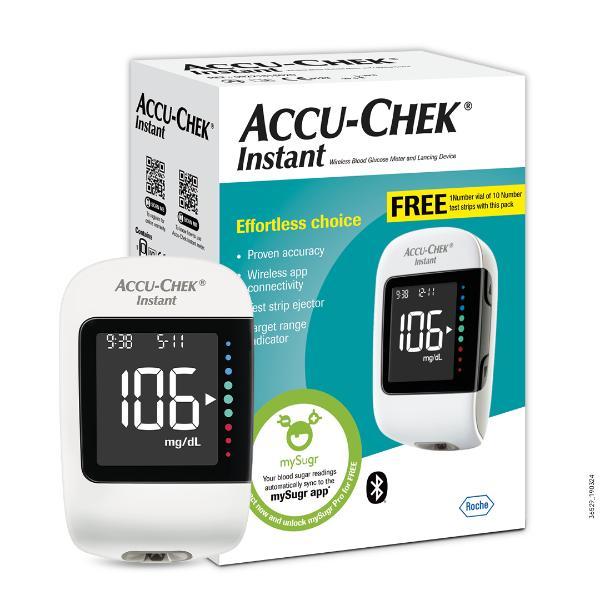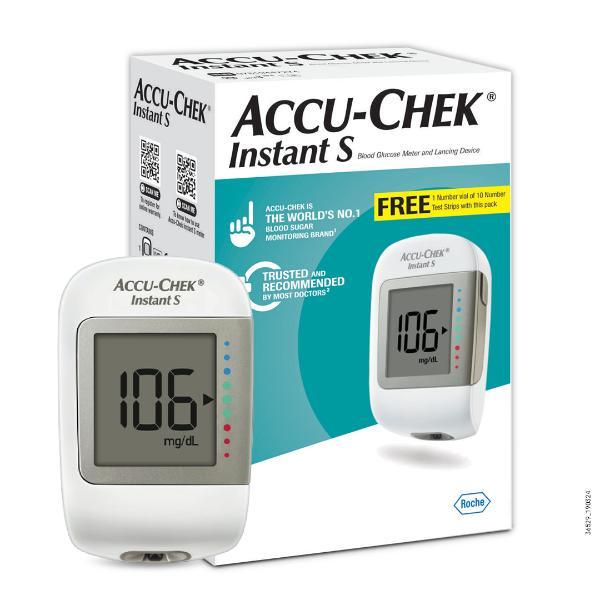



Lancets and Test Strips
Showing results in 'Lancets and Test Strips'
Dr. Morepen GlucoOne Blood Glucose Monitor (BG 03) + Blood Glucose Test Strips 25's

Sugar test strips
Sugar test strips are medical devices used to measure glucose levels in the blood. These strips are usually used by people with diabetes to monitor their blood sugar levels regularly. The strips work by using a chemical reaction with the glucose in a drop of blood, which produces an electrical signal that can be measured and displayed on a glucometer. Sugar strips and lancets are available over the counter and come in different brands, sizes, and types.
Diabetic lancets
Diabetic lancets are small, disposable medical devices used to prick the skin to obtain a small blood sample for glucose testing. They come in various gauges (thickness), lengths, and shapes to suit different preferences and skin types. Proper disposal and handling are crucial to avoid infection and injury.
Variety of blood glucose test strips available
Blood glucose test strips are used to measure the level of glucose in the blood. There are various types of blood glucose test strips available in the market, each with its own unique features.
- Bluetooth: One type of glucose test strip is designed to be used with a glucose meter that has Bluetooth capabilities. This allows the results to be sent directly to a smart phone or another device.
- Larger Sample Size: Another type of test strip is made with a larger sample size, which can be helpful for people who have difficulty drawing enough blood for a test.
- Enzyme Coated: Some test strips are coated with a special enzyme that reacts to both glucose and maltose, which can give a more accurate reading for people with conditions that affect the accuracy of their glucose tests.
- For Visually Impaired: There are also test strips designed for people with diabetes who are visually impaired or have limited dexterity. These strips may have larger numbers or be easier to handle.
Overall, the wide variety of blood glucose test strips available allows individuals to choose the product that best fits their unique needs and preferences.
Importance of sugar test strips
Sugar test strips are essential tools for people with diabetes to monitor their blood sugar levels. These strips allow individuals to check their glucose levels quickly and easily, providing important information about their overall health and the effectiveness of their diabetes management plan. Regular monitoring of blood sugar levels can help prevent serious complications associated with diabetes, such as nerve damage, kidney disease, and heart disease. Sugar test strips are also helpful in adjusting medication dosages, making dietary changes, and managing overall diabetes care.
Accuracy of sugar test strips
Sugar test strips, also known as glucose test strips, are used by people with diabetes to measure their blood sugar levels. The accuracy of these test strips can vary depending on factors such as the brand of the strip, the age and storage of the strips, and the user's technique in taking the measurement. Generally, high-quality test strips can have an accuracy range of /- 10-15% compared to laboratory readings. However, it's important to note that test strips are not a substitute for regular visits to your doctor for diabetes management.
FAQs:
How do glucose test strips work?
Glucose test strips work by using an enzyme called glucose oxidase to react with glucose in a blood sample. This produces a small electrical current that is detected by the test strip and converted into a glucose reading. The result is displayed on a meter or handheld device.
What do diabetic test strips measure?
Diabetic test strips measure the glucose (sugar) levels in a person's blood. The strips contain a chemical that reacts with the glucose in a small blood sample, producing a colour change that can be measured by a glucose meter to determine the blood glucose level.
How many times can you use a diabetes lancet?
A diabetes lancet is designed for single use only. It is not recommended to reuse lancets as it may cause infection, pain, and inaccurate blood glucose readings. Therefore, lancets and test strips should be used only once and disposed of properly to ensure safety and accuracy.
Shop by Top Manufacturers
Lifescan Medical Device India Pvt Ltd|Roche Diabetes Care India Pvt LTD|Microgene Diagnostic Systems Pvt Ltd



